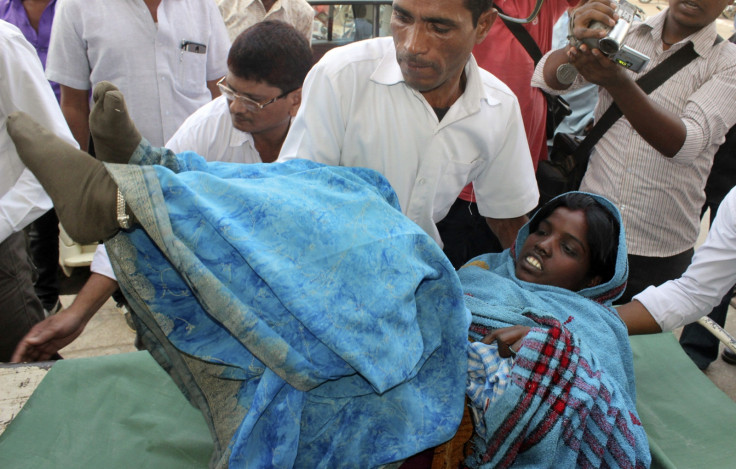India Female Sterilisation Deaths: Which Countries Have Highest Tubectomy Rates?

At least 12 women have died and 60 remain in hospital in India's central Chhattisgarh state after botched sterilisation surgery at a government-run mobile health clinic.
More than 80 women had been paid 1,400 rupees (£14) to undergo the tubectomy operation in the Bilaspur district, as part of a state-wide initiative to curb population growth in the country.
A team of doctors from Delhi are being flown to the state to help out with the emergency, the Associated Press has reported. The victims all came from poor families, who have reportedly been promised compensation of around 402,600 rupees (£4,140) each.
The Chhattisgarh government has ordered an inquiry into the deaths. According to the Hindustan Times, the state has denied any responsibility for the deaths, but some have suggested medics were under pressure from authorities to perform the procedures in too little time.
According to Engender Health, around 180 million women worldwide have undergone the sterilisation process to protect themselves from unwanted pregnancies. The procedure works by sealing the fallopian tubes that carry eggs from the ovaries to the womb, using clips, clamps or by cutting or tying the tubes to stop the egg and sperm meeting.
It requires anaesthetic and is relatively straightforward, but can pose a risk of damage to other organs or infection if not carried out properly.
Countries with the highest rates of female sterilisation

India
Authorities in India have been promoting contraception for several decades, to convince families in the world's second-largest country to have smaller families. By 2030, India is set to overtake China as the world's most populous country. It currently has a population of 1.27 billion.
Poor women are the target for state sterilisation schemes and 37% of women of reproductive age in India are sterilised, according to United Nations data from 2011. In 2011 to 2012, the government estimated that 4.6 million women had undergone a tubectomy.
Brazil
The prevalence of female sterilisation in Brazil is among the highest in the world. In 1996, when sterilisation became legal for men and women, it was the most widely used method of contraception, undertaken by around 40% of women.
Prevalence of the procedure has grown between the populous northeast region of Brazil and among poor communities. Before the procedure became legal, doctors were reported to have performed the sterilisation process on female patients after they had undergone a caesarean section surgery.

China
In China, more than 25% of women of reproductive age have undergone the procedure, according to UN statistics. In 1978, the possibility of a baby boom that the country could not handle led to Chinese authorities to initiate the one-child policy, placing great emphasis on family planning.
Amnesty International has raised concerns that illegal practices of compulsory sterilisation have taken place for women who have already had their one child, to meet state family planning targets.
USA
Sterilisation is the most common form of contraception in the United States when female and male usage is combined. Approximately 23% of women of reproductive age have undergone the procedure, according to the UN.
According to the Centers for Disease Control and Prevention, 16.7% of women ages 15 to 44 used female sterilisation as a contraceptive method from 2006 to 2008.
UK
Sterilisation is more popular among men in the United Kingdom than women, with over 20% of men having undergone a vasectomy in 2011, the UN reported. In comparison, under 10% of women have had a tubectomy.
The choice of sterilisation for contraceptive purposes became available in Britain in the 1970s. According to the charity FPA, over 18,000 female sterilisations and over 28,000 vasectomies were performed in NHS hospitals or clinics in 2005.
© Copyright IBTimes 2025. All rights reserved.




















